For our ‘Reading with Austen’ Readers: I posted this originally on my Jane Austen in Vermont blog, but thought it would be an interesting exercise to see which of the many books mentioned by Janice Hadlow in herThe Other Bennet Sister were actually in Edward Knight’s library at Godmersham – so here is the post, with the addition of all titles in the the GPL and whether they are safe in the Knight Collection, or LOST SHEEP.
*******************

In Janice Hadlow’s The Other Bennet Sister, a brilliant effort to give the neglected-by-everyone Mary Bennet a life of her own, Mary’s reading is one of the most important aspects of the book – we see her at first believing, because she knows she is different than her other four far prettier and more appealing sisters, that her prospects for the expected life of a well-married woman are very limited, and that she must learn to squash her passions and live a rational life. She also mistakenly thinks that by becoming a reader of philosophical, religious, and conduct texts that she will finally gain approval and maybe even love from her distant, book-obsessed father.
So Mary embarks on a course of serious rational study – and one of the most insightful things in the book is that she learns, after much pain and introspection, that this is no way to lead a life, to find happiness, to find herself. She rejects the novels like the ones Mrs. Bennet finds at the local circulating library as being frivolous, largely because James Fordyce tells her so…
So, I have made a list of all the titles that Hadlow has Mary reading or referring to – all real books of the time, and many mentioned and known by Jane Austen. Hadlow is very specific in what books she puts in Mary’s hands! And shows her own knowledge of the reading and the reading practices of Austen’s era. [If anyone detects anything missing from this list, please let me know…]
I am giving the original dates of publication of each title; most all the titles in one edition or another are available on Google Books, HathiTrust, Internet Archive, or the like – I provide a few of those links, if you are so inclined to become such a rational reader as Mary….
***************
Anonymous. The History of Little Goody Two Shoes (show JA’s copy). London: John Newbury, 1765. Attributed to various authors, including Oliver Goldsmith. We know that Jane Austen has her own copy of this book, here with her name on it as solid proof.
This exact copy, as noted in Gilson K1, is owned by the great-grandsons of Admiral Sir Francis Austen. It has been on display in the exhibition at the Jane Austen’s House in Chawton in 1975 and at the British Library in 1976.
Mrs. [Sarah] Trimmer. The Story of the Robins. Originally published in 1786 as Fabulous Histories, and the title Trimmer always used. You can read the whole book here: https://en.wikisource.org/wiki/The_Story_of_the_Robins

image: HockliffeProject: http://hockliffe.dmu.ac.uk/items/0241pages.html?page=001
Nothing in the GPL.
Rev. Wetenhall Wilkes. A Letter of Genteel and Moral Advice to a Young Lady: Being a System of Rules and Informations: Digested Into a New and Familiar Method, to Qualify the Fair Sex to be Useful, and Happy in Every Scene of Life. London, 1746. Another conduct book.
Full text here: https://catalog.hathitrust.org/Record/012393127
Nothing in the GPL.
***********
Catharine Macaulay. The History of England. 8 vols. London, 1763-83. A political history of the seventeenth century, covering the years 1603-1689. This was very popular and is in no way related to the later History published by Thomas Babington Macaulay. You can read more about this influential female historian in this essay by Devoney Looser: Catharine Macaulay: The ‘Female Historian’ in Context
5 volumes only are noted in the GPL catalogue and all are extant in the Knight Collection:


image: British Library https://www.bl.uk/collection-items/sermons-to-young-women
Rev. James Fordyce. Sermons to Young Women. London, 1766. A conduct manual.
In Pride and Prejudice, Mr. Collins chooses to read Fordyce’s Sermons to Young Women aloud to the Bennet sisters, Lydia especially unimpressed: “Lydia gaped as he opened the volume, and before he had, with very monotonous solemnity, read three pages, she interrupted him …’.
You can find it on google in later editions, but here is an abstract for 2 of the sermons to give you an idea.
And here an essay on Fordyce and P&P by Susan Allen Ford, who also wrote the introduction for the Chawton House Press edition of the Sermons (2012) : http://www.jasna.org/persuasions/on-line/vol34no1/ford.html
Listed in the GPL and in the Knight Collection at Chawton House:

*************
Frances Burney. Evelina, or the History of a Young Lady’s Entrance into the World. London, 1778. Hadlow gives Evelina a good hearing – in the discussion in Mr. Bennet’s library with Elizabeth and Mary. Elizabeth directly quotes Austen’s own words in defense of the novel that are found in Northanger Abbey. [Evelina, and Mary’s difficulty in coming to terms with such a frivolous story, is mentioned more than once].
The only work of Frances Burney listed in the GPL is The Wanderer – and that remains in the Knight Collection – only 3 of the 5 volumes, volumes 1 and 5 have gone missing… so are LOST SHEEP:

***********
Other Novels mentioned are:
– Samuel Richardson. The History of Sir Charles Grandison. London, 1753. 7 vols. Reported to be Austen’s favorite book, all seven volumes!
And all 7 volumes are in the GPL catalogue and remain in the Knight Collection: [but where oh where is Pamela??]

*************
– Henry Fielding. The History of Tom Jones, a Foundling. 4 vols. London, 1749. Supposedly the reason Richardson wrote his Grandison. [Mentioned more than once] – and here we find three LOST SHEEP:
There are three Fielding titles in the GPL:
- Tom Jones (1749 – it says it is 6 volumes) – it is however, a LOST SHEEP
- A Journal of a Voyage to Lisbon (1755) – a LOST SHEEP
- And Joseph Andrews (1742) – a LOST SHEEP
****************
– Laurence Sterne. The Life and Opinions of Tristram Shandy, Gentleman. 9 vols. London, 1759-1767.

In the GPL catalogue and in the Knight Collection – only 2 volumes are listed, dated 1760, 2nd ed. Sterne published the first 2 volumes in 1759, and seven others followed over the next seven years (vols. 3 and 4, 1761; vols. 5 and 6, 1762; vols. 7 and 8, 1765; vol. 9, 1767).
The GPL also lists Sterne’s The Sermons of Mr. Yorick (London, 1765-66) – and the 7th ed. is happily in the Knight Collection.
***************
Hugh Blair. Sermons. Vol. 1 of 5 published in 1777.
You can view it full-text at HathiTrust.
Mary Crawford refers to Blair in Mansfield Park:
“You assign greater consequence to the clergyman than one has been used to hear given, or than I can quite comprehend. One does not see much of this influence and importance in society, and how can it be acquired where they are so seldom seen themselves? How can two sermons a week, even supposing them worth hearing, supposing the preacher to have the sense to prefer Blair’s to his own, do all that you speak of? govern the conduct and fashion the manners of a large congregation for the rest of the week? One scarcely sees a clergyman out of his pulpit.”
Well, both Blair’s Sermons (all 5 volumes of varying dates) and Blair’s Lectures on Rhetoric and Belles Lettres. 11th ed. 3 volumes (London, 1809), are in the GPL catalogue and remain in the Knight Collection:

***************

William Paley, by George Romney (wikipedia)
William Paley. A View of the Evidences of Christianity. London, 1794.
Paley is well-represented in the GPL: this Evidences (2nd. ed., 1794) – in the Knight Collection, but also his:
– The principles of moral and political philosophy. By William Paley, M.A. Archdeacon of Carlisle. The second edition corrected (London, 1786) – in the Knight Collection.
– Horæ Paulinæ, or the truth of the scripture history of St. Paul evinced, by a comparison of the epistles which bear his name, with the Acts of the Apostles, and with one another. By William Paley, M.A. Archdeacon of Carlisle. 1st ed. (London, 1790) – in the Knight Collection.
– Natural Theology; or, Evidences of the Existence and Attributes of The Deity, collected from the appearances of nature. By William Paley, D.D. Late Archdeacon of Carlisle. The Sixteenth Edition, 1 vol. (London, 1819) – a LOST SHEEP

******************
Aristotle. The Ethics of Aristotle. [no way to know the exact edition that Mr. Collins gives to Mary – it’s been around for a long time!]
The GPL lists only one Aristotle title, and this is a LOST SHEEP:
Aristotelous Peri Poiētikēs. Aristotelis De Poetica Liber. Textum recensuit, versionem refinxit et animadversionibus illustravit, Thomas Tyrwhitt. Editio Tertia (Oxford, 1806).
****************
Mentions: all Enlightenment thinkers and heavy reading for Mary!
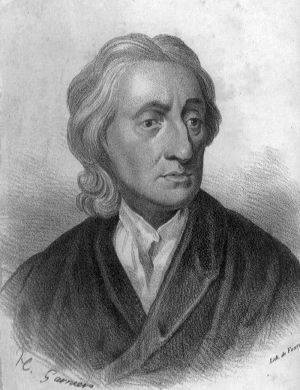
John Locke – LOC (wikipedia)
– John Locke: the GPL lists only this title and it is a LOST SHEEP
Two Treatises of Government: In the Former, The false Principles and Foundation of Sir Robert Filmer, And his Followers, Are Detected and Overthrown. The Latter, is an Essay Concerning the True Original, Extent, and End of Civil Government. By John Locke Esq; The Fifth Edition. 1 vol. (London, 1728).
***
– Jean-Jacques Rousseau: much more popular in Edward’s library! – there are several titles listed, these all in the Knight Collection:
Emilius; or, an Essay on Education. By John James Rousseau, Citizen of Geneva. Translated from the French by Mr. Nugent. In two volumes (London, 1763)
A Project for Perpetual Peace. By J. J. Rousseau, Citizen of Geneva. Translated from the French, with a Preface by the Translator (London, 1761).
Lettres de deux amans, Habitans d’une petite Ville au pied des Alpes. Recueillies et publiées par J.J. Rousseau. 3 vols. (Amsterdam, 1761)
Oeuvres diverses de Mr. J.J. Rousseau, citoyen de Genève. 2 vols. (Amsterdam, 1762):

There is some LOST SHEEP material here, but what is actually missing needs to be sorted – M Rousseau is in need of further investigation and might get his very own blog post!
Collection complette des oeuvres de J.J. Rousseau. 1774-1783. partially a LOST SHEEP
**************

David Hume (McGill)
– David Hume has three titles in the GPL:
The History of England, from The Invasion of Julius Cæsar to the Accession of Henry VII. Containing the Reign of The Prince before Conquest, William the Conqueror, William Rufus, Henry I., Stephen, Henry II, Richard I. and John. By David Hume, Esq. 1 vol. (London, 1777) – in the Knight Collection.
Essays, Moral and Political. The Second Edition, Corrected. 2 vols. (Edinburgh, 1742) – a LOST SHEEP (though we know it sold at auction in 2013).
The Life of David Hume, Esq. written by himself. 1 vol. (London, 1777) – a LOST SHEEP
*************
A Dictionary of the Greek Language – Mr. Collins gives a copy to Mary:
We cannot know what book Mr. Collins gives Mary – but there are a number of titles in the GPL either in Greek or translated from the Greek. There is this one Greek grammar which I shall include here since it is a LOST SHEEP:
The Elements of Greek grammar, with notes for the use of those who have made some progress in the language. By Richard Valpy. 1 vol. (London, 1805).
*************
Edward Young. The Complaint: or, Night-Thoughts on Life, Death, and Immortality. [Known as Night-Thoughts]. London, 1742-45. [No wonder Mr. Hayward suggested a lighter type of poetry!]
You can read the whole of it here, if you are up to it…: https://www.eighteenthcenturypoetry.org/authors/pers00267.shtml
This is in the GPL and is unfortunately a LOST SHEEP: The complaint: or, night-thoughts on life, death, and immortality. By Edward Young. 2 vols. (London, 1746).
**************

William Wordsworth, portrait by Henry Edridge, 1804; in Dove Cottage, Grasmere, England. Britannica.com
William Wordsworth. Lyrical Ballads. London, 1798. Full title: Lyrical Ballads, with a Few Other Poems is a collection of poems by William Wordsworth and Samuel Taylor Coleridge [Mr. Hayward does not mention Coleridge at all!], first published in 1798 and considered to have marked the beginning of the English Romantic movement in literature. Most of the poems in the 1798 edition were written by Wordsworth; Coleridge has only four poems included, one being his most famous work, The Rime of the Ancient Mariner.
Here is a link to the full-text of “Tintern Abbey” that so moved Mary: https://www.poetryfoundation.org/poems/45527/lines-composed-a-few-miles-above-tintern-abbey-on-revisiting-the-banks-of-the-wye-during-a-tour-july-13-1798
Well, I find this interesting – The Knights must not have been much for the Romantics! Wordsworth, Coleridge, Byron, Keats, Shelley – none are in the GPL at all; Robert Southey has three titles, all in the Knight Collection, so I shall leave him for another day…
*********************
William Godwin. Enquiry Concerning Political Justice and its Influence on Morals and Happiness. London, 1793. [Godwin married Mary Wollstonecraft and was the father of Mary Godwin Shelley]. Outlines Godwin’s radical political philosophy.

William Godwin (portrait by James Northcote) and Mary Wollstonecraft (portrait by John Opie) – from BrainPickings.org
No Godwin either, nor any Wollstonecraft…
************

Machiavelli (wikipedia)
Machiavelli – is referred to by Mary, so assume she is familiar with his The Prince (1513).
But we do find Machiavelli!:
The Works of the famous Nicolas Machiavel, Citizen and Secretary of Florence. Written OriginaIly in Italian, And from thence newly and faithfully Translated into English. 1st ed. 1 vol. (London, 1695) – a LOST SHEEP
****************

Image: Guide to the Lakes. ‘View on Winandermere’ [now called Windermere], by Joseph Wilkerson. Romantic Circles
Alas! no Guide either…
******************
John Milton. Paradise Lost. A mention by Mr. Ryder who is defeated by its length, so we know Mary was familiar with it.
Milton gets his due in the GPL:
Paradisus Amissus. Poema Joannis Miltoni. Latine Redditum A Guilielmo Dobson, LL.B. Nov. Coll. Oxon. Socio. [By John Milton, trans. William Dobson, William]. 1 vol. (Oxford, 1750) – in the Knight Collection.
Paradise Lost. A Poem. The Author, John Milton. 1 vol. (London, 1736) – this is a FOUND SHEEP – thanks to three of our esteemed GLOSS Friends!:

Paradise lost. A poem, in twelve books. The Author John Milton. 1 vol. (London, 1751). This is LOST SHEEP (perhaps Mary Bennet absconded with it??)
Paradise regain’d. A poem, in four books. To which is added Samson Agonistes; and Poems upon Several Occasions: And Poems upon Severl Occasions. The author John Milton. The Second Edition, With Notes of various Authors, By Thomas Newton, D. D. 1 vol. (London, 1743) – another LOST SHEEP.
***********
The Edinburgh Review / The Quarterly Review – brought to Mary by Mr. Ryder, and for which Mr. Hayward perhaps wrote his reviews. The Edinburgh Review (1802-1929); Quarterly Review (1809-1967, and published by Jane Austen’s publisher John Murray) – both were very popular and influential publications of their time…
None are listed in the GPL catalogue, which is not to say that the Knights and Family did not pour over these on a regular basis…
*********************
The Other Bennet Sister is an enjoyable read – it is delightful to see Mary Bennet come  into her own, that despite what she viewed as an unhappy childhood, she finds her way through a good number of books in a quest to live a rational, passionless existence. And that the development of some well-deserved self-esteem with the help of various friends and family, might actually lead her to a worthy equal partner in life, just maybe not with Mrs. Bennet’s required £10,000 !
into her own, that despite what she viewed as an unhappy childhood, she finds her way through a good number of books in a quest to live a rational, passionless existence. And that the development of some well-deserved self-esteem with the help of various friends and family, might actually lead her to a worthy equal partner in life, just maybe not with Mrs. Bennet’s required £10,000 !
- Here is an excellent review of the book at The Christian Science Monitor: https://www.csmonitor.com/Books/Book-Reviews/2020/0408/The-Other-Bennet-Sister-focuses-attention-on-bookish-Mary
- And an interview with the author at NPR: https://www.npr.org/2020/04/09/830069319/elizabeths-more-serious-sister-mary-takes-the-spotlight-in-the-other-bennet-sist



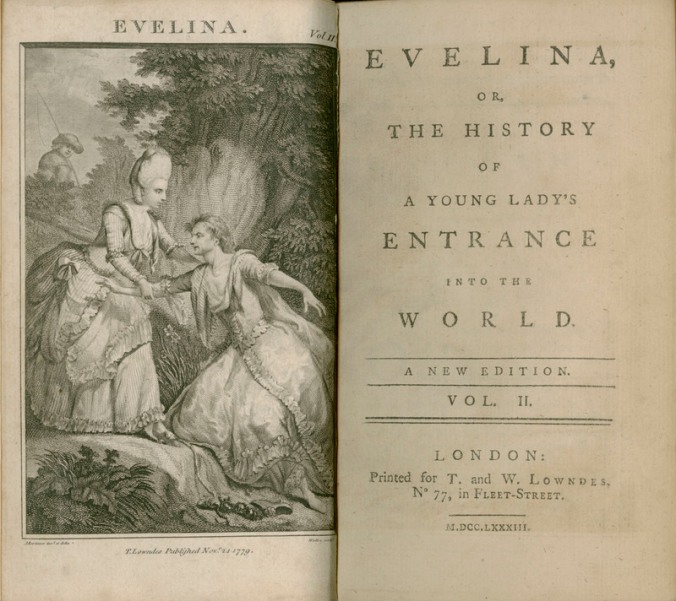





 Our GLOSS Team is very pleased to announce a new
Our GLOSS Team is very pleased to announce a new 











 In the most recent issue of Jane Austen’s Regency World magazine, there is an essay by Emily Brand on “Foul-weather Jack,” a tale about poet Byron’s grandfather Vice-Admiral John Byron (1723-1786). Brand has recently published her book on the Byron family, The Fall of the House of Byron (John Murray, 2020), and it looks like a compelling read about a family that seemed to be cursed with all manner of misfortune through at least three generations.
In the most recent issue of Jane Austen’s Regency World magazine, there is an essay by Emily Brand on “Foul-weather Jack,” a tale about poet Byron’s grandfather Vice-Admiral John Byron (1723-1786). Brand has recently published her book on the Byron family, The Fall of the House of Byron (John Murray, 2020), and it looks like a compelling read about a family that seemed to be cursed with all manner of misfortune through at least three generations.

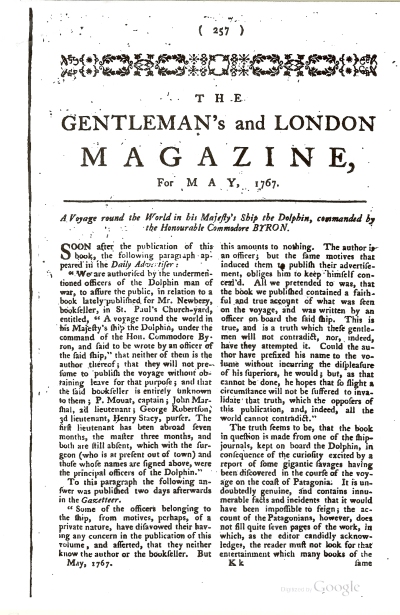

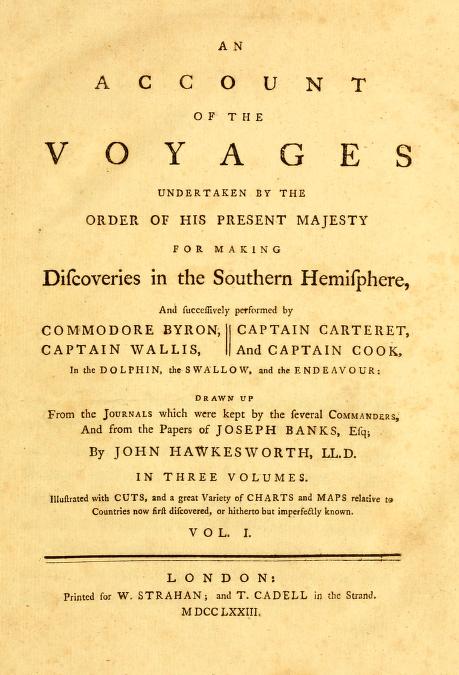



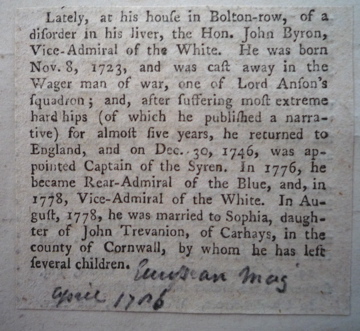

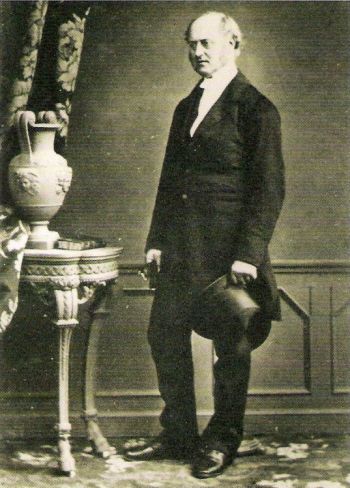 Charles Bridges was born March 11, 1803 at Godmersham Park in Kent, the 8th child of Jane Austen’s brother Edward Knight and Elizabeth Bridges. He was a commoner at Winchester* from 1816-1820, attended Trinity College, Cambridge and was ordained in 1828. He was the curate of West Worldham in Hampshire and rector of Chawton from 1837-1867. He died unmarried on October 13, 1867, aged 64 years. He is buried in the graveyard at the St. Nicholas Churchyard in Chawton (Section B: Row 2. 70 ).
Charles Bridges was born March 11, 1803 at Godmersham Park in Kent, the 8th child of Jane Austen’s brother Edward Knight and Elizabeth Bridges. He was a commoner at Winchester* from 1816-1820, attended Trinity College, Cambridge and was ordained in 1828. He was the curate of West Worldham in Hampshire and rector of Chawton from 1837-1867. He died unmarried on October 13, 1867, aged 64 years. He is buried in the graveyard at the St. Nicholas Churchyard in Chawton (Section B: Row 2. 70 ).


















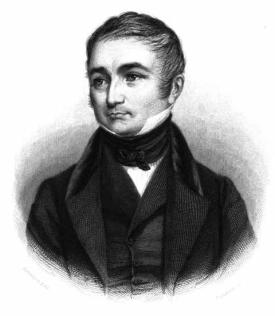
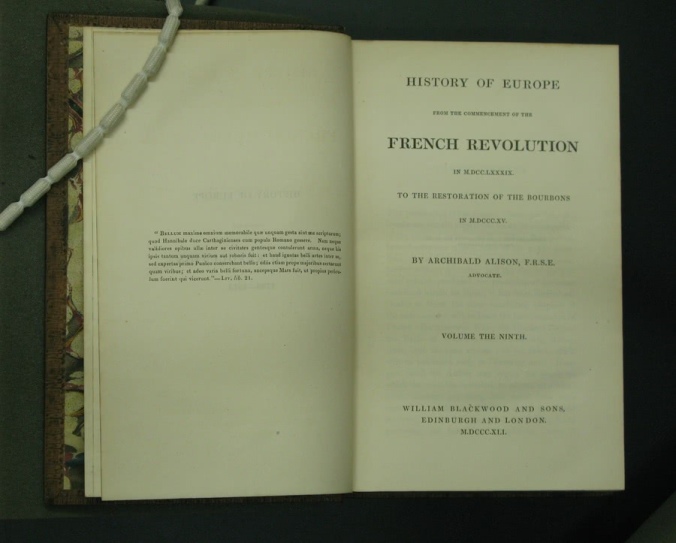








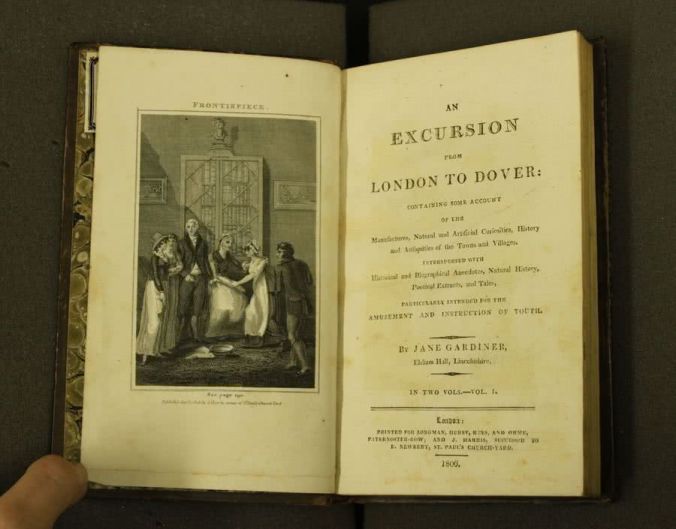


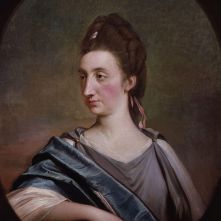




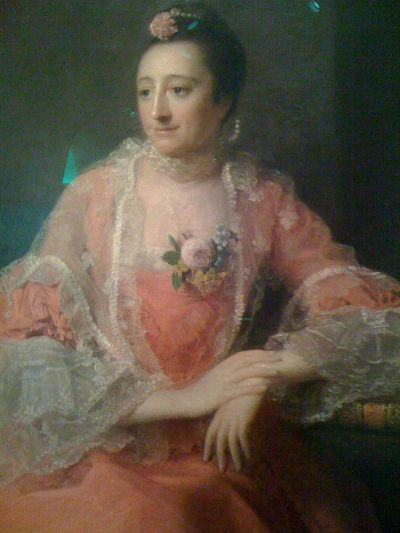
 Scott published all her works anonymously, though as with Jane Austen, it was likely an “open secret” among her friends and correspondents. Her first novel was The History of Cornelia, published in 1750, and wherein the Heroine has a number of Gothic encounters but returns to a rational and safe view of the world, the book similar to Northanger Abbey in its emphasis on the dangers of reading and female sexuality.
Scott published all her works anonymously, though as with Jane Austen, it was likely an “open secret” among her friends and correspondents. Her first novel was The History of Cornelia, published in 1750, and wherein the Heroine has a number of Gothic encounters but returns to a rational and safe view of the world, the book similar to Northanger Abbey in its emphasis on the dangers of reading and female sexuality.


 and Fortunes of a Young Lady of Some Distinction (1754). A loose translation of Le Laideur aimable by Pierre Antoine, Marquis de La Place, it is a morality tale of two sisters, one beautiful but vain, and the other plain but virtuous. There is a copy at the British Library, a free ebook on Google Books, and a Gale ECCO reprint POD.
and Fortunes of a Young Lady of Some Distinction (1754). A loose translation of Le Laideur aimable by Pierre Antoine, Marquis de La Place, it is a morality tale of two sisters, one beautiful but vain, and the other plain but virtuous. There is a copy at the British Library, a free ebook on Google Books, and a Gale ECCO reprint POD.


 -The Life of Theodore Agrippa d’Aubigné, Containing a Succinct Account of the Most Remarkable Occurrences during the Civil Wars of France in the Reigns of Charles IX, Henry III, Henry IV, and in the Minority of Lewis XIII (1772). [No author noted.] Theodore Agrippa d’Aubigné (1552-1630) was a French poet, soldier, and historian. At the British Library and a few other libraries in the UK and one in Dublin; full text at HathiTrust and Google (same copy); various reprints available.
-The Life of Theodore Agrippa d’Aubigné, Containing a Succinct Account of the Most Remarkable Occurrences during the Civil Wars of France in the Reigns of Charles IX, Henry III, Henry IV, and in the Minority of Lewis XIII (1772). [No author noted.] Theodore Agrippa d’Aubigné (1552-1630) was a French poet, soldier, and historian. At the British Library and a few other libraries in the UK and one in Dublin; full text at HathiTrust and Google (same copy); various reprints available.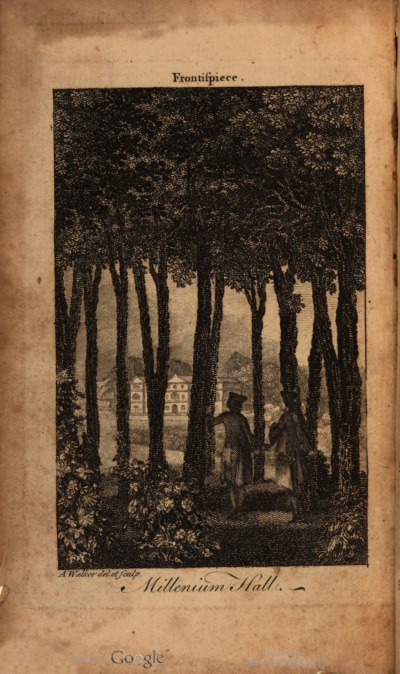



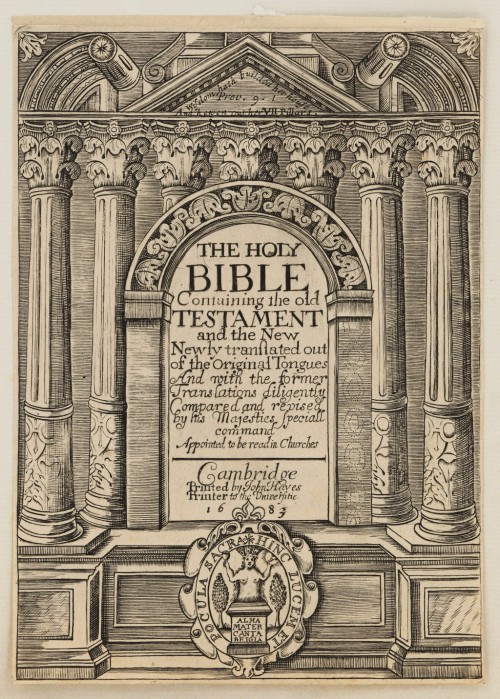










 This is a continuation of recording the diaries of Charles Bridges Knight, son of Edward Knight, and his mentions of the books he is reading in the Godmersham Park Library. We thank Austen scholar Hazel Jones for so graciously sharing her finds with us. It very much brings this library to life as we imagine Charles sitting and reading there, much like his aunt Jane Austen would have done several years before. Some of his diary entries are about the Library itself – fires and warmth (or lack thereof), pictures, outside trees, etc., which brings us vividly back to Austen’s own comments of being there: “Mistress of all I survey…”
This is a continuation of recording the diaries of Charles Bridges Knight, son of Edward Knight, and his mentions of the books he is reading in the Godmersham Park Library. We thank Austen scholar Hazel Jones for so graciously sharing her finds with us. It very much brings this library to life as we imagine Charles sitting and reading there, much like his aunt Jane Austen would have done several years before. Some of his diary entries are about the Library itself – fires and warmth (or lack thereof), pictures, outside trees, etc., which brings us vividly back to Austen’s own comments of being there: “Mistress of all I survey…”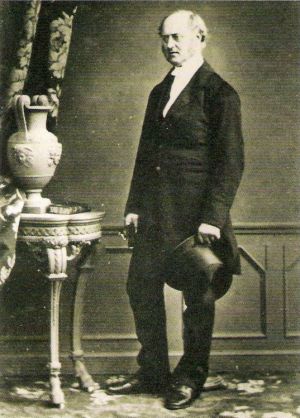 Park in Kent, the 8th child of Jane Austen’s brother Edward Knight and Elizabeth Bridges. He was a commoner at Winchester* from 1816-1820, attended Trinity College, Cambridge and was ordained in 1828. He was the curate of West Worldham in Hampshire and rector of Chawton from 1837-1867. He died unmarried on October 13, 1867, aged 64 years. He is buried in the graveyard at the St. Nicholas Churchyard in Chawton (Section B: Row 2. 70 ).
Park in Kent, the 8th child of Jane Austen’s brother Edward Knight and Elizabeth Bridges. He was a commoner at Winchester* from 1816-1820, attended Trinity College, Cambridge and was ordained in 1828. He was the curate of West Worldham in Hampshire and rector of Chawton from 1837-1867. He died unmarried on October 13, 1867, aged 64 years. He is buried in the graveyard at the St. Nicholas Churchyard in Chawton (Section B: Row 2. 70 ).









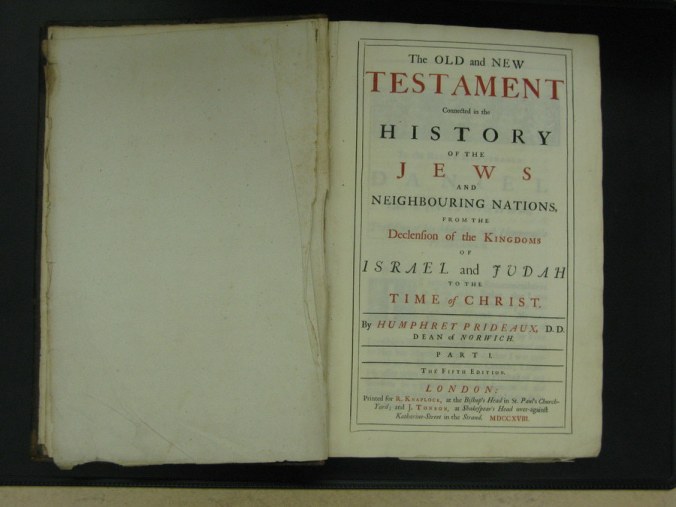
 Laurence Echard. A General Ecclesiastical History from the Nativity of our Blessed Saviour to The First Establishment of Christianity By Humane Laws, Under the Emperour Constantine the Great. Containing the Space of about 313 Years. With so much of the Jewish and Roman History as is Necessary and Convenient to illustrate the Work. To which is added, A Large Chronological Table of all the Roman and Ecclesiastical Affairs, included in the same Period of TIme. By Laurence Echard, A. M. Prebendary of Lincoln, and Chaplain to the Right Reverend James, Lord Bishop of that Diocese. London, 1702.
Laurence Echard. A General Ecclesiastical History from the Nativity of our Blessed Saviour to The First Establishment of Christianity By Humane Laws, Under the Emperour Constantine the Great. Containing the Space of about 313 Years. With so much of the Jewish and Roman History as is Necessary and Convenient to illustrate the Work. To which is added, A Large Chronological Table of all the Roman and Ecclesiastical Affairs, included in the same Period of TIme. By Laurence Echard, A. M. Prebendary of Lincoln, and Chaplain to the Right Reverend James, Lord Bishop of that Diocese. London, 1702. Thomas Knight bookplate and this interesting cover: this Elizabeth Knight is the original cousin with the Knight name which was taken by Thomas Brodnax May in order to inherit the estate in Chawton. It was his son Thomas who adopted Jane Austen’s brother. For a full understanding of all these names see Chawton Manor and Its Owners; A Family History, by William Austen-Leigh and Montagu George Knight.
Thomas Knight bookplate and this interesting cover: this Elizabeth Knight is the original cousin with the Knight name which was taken by Thomas Brodnax May in order to inherit the estate in Chawton. It was his son Thomas who adopted Jane Austen’s brother. For a full understanding of all these names see Chawton Manor and Its Owners; A Family History, by William Austen-Leigh and Montagu George Knight. Robert Gray: The Connection between the Sacred Writings and the Literature of Jewish and Heathen Authors, particularly that of the Classical Ages, Illustrated, principally with a view to evidence in confirmation of the truth of Revealed Religion. By Robert Gray, D. D. Prebendary of Durham and of Chichester, and Rector of Bishop Wearmouth. [Later the Bishop of Bristol], published in London in 1816 – in the 1818 catalogue and
Robert Gray: The Connection between the Sacred Writings and the Literature of Jewish and Heathen Authors, particularly that of the Classical Ages, Illustrated, principally with a view to evidence in confirmation of the truth of Revealed Religion. By Robert Gray, D. D. Prebendary of Durham and of Chichester, and Rector of Bishop Wearmouth. [Later the Bishop of Bristol], published in London in 1816 – in the 1818 catalogue and 



 The earliest surviving reference to Partholón is in the Historia Brittonum, a 9th-century British-Latin compilation attributed to Nennius. Partholon was the first colonist of Ireland by way of Greece. He is now considered just a character in medieval Irish Christian pseudo-history, probably an invention of the Christian writers.
The earliest surviving reference to Partholón is in the Historia Brittonum, a 9th-century British-Latin compilation attributed to Nennius. Partholon was the first colonist of Ireland by way of Greece. He is now considered just a character in medieval Irish Christian pseudo-history, probably an invention of the Christian writers. ‘Wednesday Dec 30 … We are reading Scougal’s Life of God in the soul of man, & like it.’) … (‘One of the best books I ever read’ he reports on completing Scougal). I read a little of Stanley on birds in the evening.’
‘Wednesday Dec 30 … We are reading Scougal’s Life of God in the soul of man, & like it.’) … (‘One of the best books I ever read’ he reports on completing Scougal). I read a little of Stanley on birds in the evening.’

 – Isaac D’Israeli. Curiosities of literature. 7th ed, corrected. In five volumes. London: John Murray, 1823. Vols. 3-5 are in the Knight Collection (not yet on the RwA website).
– Isaac D’Israeli. Curiosities of literature. 7th ed, corrected. In five volumes. London: John Murray, 1823. Vols. 3-5 are in the Knight Collection (not yet on the RwA website). ‘Jany 10 … contrived to spin out my toilet with a little of Nelson’s devotions till 9 our breakfast hour.’
‘Jany 10 … contrived to spin out my toilet with a little of Nelson’s devotions till 9 our breakfast hour.’

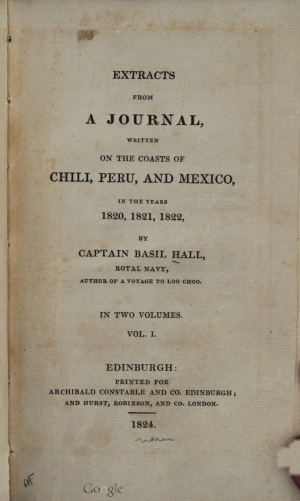 Extracts from a journal, written on the coasts of Chili, Peru, and Mexico, in the years 1820, 1821, 1822. By Captain Basil Hall, Royal Navy, author of a voyage to Loo Choo. In two volumes. Printed for Archibald Constable and Co. Edinburgh; and Hurst, Robinson, and Co. London, 1824.
Extracts from a journal, written on the coasts of Chili, Peru, and Mexico, in the years 1820, 1821, 1822. By Captain Basil Hall, Royal Navy, author of a voyage to Loo Choo. In two volumes. Printed for Archibald Constable and Co. Edinburgh; and Hurst, Robinson, and Co. London, 1824. 
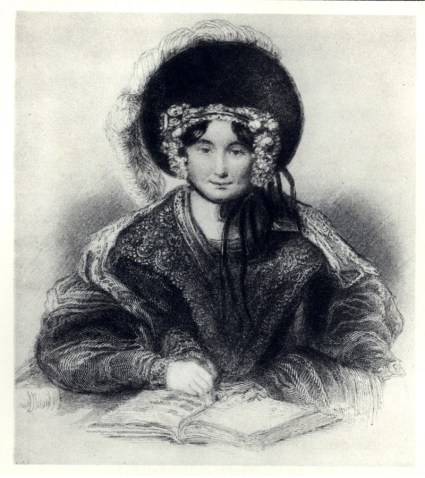
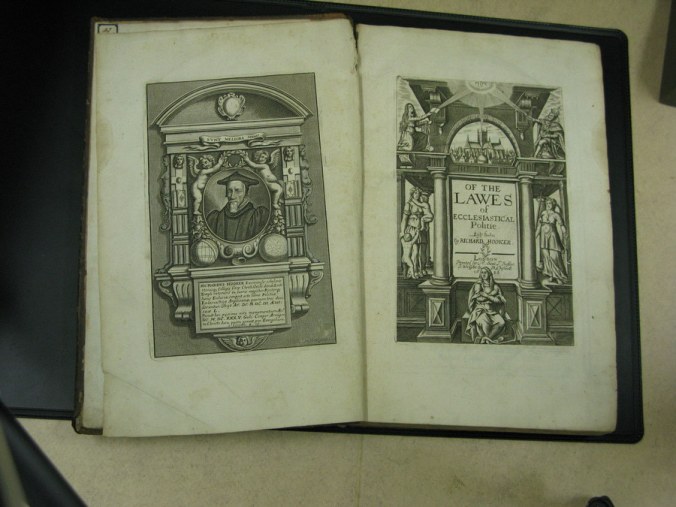
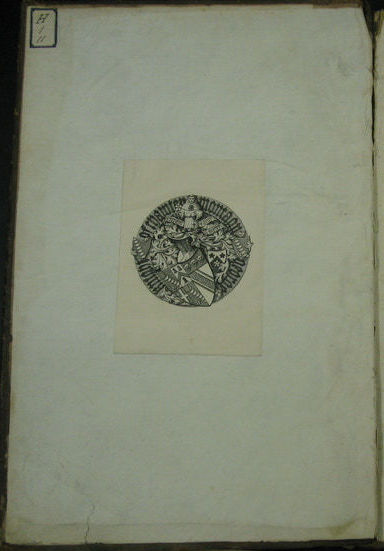


 This title was initially indecipherable, but further sleuthing on Ms. Jones’s part tuned up a second reference to Ross Cox, so we know Charles was referring to Cox’s Adventures on the Columbia River (Henry Colburn & Richard Bentley, London, 1831).
This title was initially indecipherable, but further sleuthing on Ms. Jones’s part tuned up a second reference to Ross Cox, so we know Charles was referring to Cox’s Adventures on the Columbia River (Henry Colburn & Richard Bentley, London, 1831). *****
***** 9. George Montagu, Ornithological Dictionary (1802).
9. George Montagu, Ornithological Dictionary (1802).

 Hazel Jones is the author of Jane Austen & Marriage (Bloomsbury Continuum 2009, Uppercross Press 2017), Celebrating Pride & Prejudice (co-authored with Maggie Lane, Lansdown 2012), Jane Austen’s Journeys (Hale 2014) and is currently writing a book on Jane Austen’s Knight nephews. She was a tutor in the Department of Lifelong Learning at Exeter University until 2005 and continues to teach residential courses on aspects of Jane Austen’s writing, life and times. She is the membership secretary and a co-founder of the UK Jane Austen Society, South West Branch.
Hazel Jones is the author of Jane Austen & Marriage (Bloomsbury Continuum 2009, Uppercross Press 2017), Celebrating Pride & Prejudice (co-authored with Maggie Lane, Lansdown 2012), Jane Austen’s Journeys (Hale 2014) and is currently writing a book on Jane Austen’s Knight nephews. She was a tutor in the Department of Lifelong Learning at Exeter University until 2005 and continues to teach residential courses on aspects of Jane Austen’s writing, life and times. She is the membership secretary and a co-founder of the UK Jane Austen Society, South West Branch.

 Willughby, Francis. The Ornithology of Francis Willughby of Middleton in the County of Warwick Esq; Fellow of the Royal Society. In Three Books. Wherein All the Birds Hitherto Known, Being reduced into a Method sutable [sic] to their Natures, are accurately described. The Descriptions illustrated by most Elegant Figures, nearly resembling the live Birds, Engraven in LCCVIII Copper Plates. Translated into English, and enlarged with many Additions throughout the whole Work: To which are added, Three Considerable Discourses, I. Of the Art of Fowling: With a Description of several Nets in two large Copper Plates. II. Of the Ordering of Singing Birds. III. Of Falconry. By John Ray, Fellow of the Royal Society. [Epigraph on title page]. London: Printed by A.C. for John Martyn, Printer to the Royal Society, at the Bell in St. Pauls Church-Yard, 1678.
Willughby, Francis. The Ornithology of Francis Willughby of Middleton in the County of Warwick Esq; Fellow of the Royal Society. In Three Books. Wherein All the Birds Hitherto Known, Being reduced into a Method sutable [sic] to their Natures, are accurately described. The Descriptions illustrated by most Elegant Figures, nearly resembling the live Birds, Engraven in LCCVIII Copper Plates. Translated into English, and enlarged with many Additions throughout the whole Work: To which are added, Three Considerable Discourses, I. Of the Art of Fowling: With a Description of several Nets in two large Copper Plates. II. Of the Ordering of Singing Birds. III. Of Falconry. By John Ray, Fellow of the Royal Society. [Epigraph on title page]. London: Printed by A.C. for John Martyn, Printer to the Royal Society, at the Bell in St. Pauls Church-Yard, 1678.







 *Hazel Jones is the author of Jane Austen & Marriage (Bloomsbury Continuum 2009, Uppercross Press 2017), Celebrating Pride & Prejudice (co-authored with Maggie Lane, Lansdown 2012), Jane Austen’s Journeys (Hale 2014) and is currently writing a book on Jane Austen’s Knight nephews. She was a tutor in the Department of Lifelong Learning at Exeter University until 2005 and continues to teach residential courses on aspects of Jane Austen’s writing, life and times. She is the membership secretary and a co-founder of the UK Jane Austen Society, South West Branch.
*Hazel Jones is the author of Jane Austen & Marriage (Bloomsbury Continuum 2009, Uppercross Press 2017), Celebrating Pride & Prejudice (co-authored with Maggie Lane, Lansdown 2012), Jane Austen’s Journeys (Hale 2014) and is currently writing a book on Jane Austen’s Knight nephews. She was a tutor in the Department of Lifelong Learning at Exeter University until 2005 and continues to teach residential courses on aspects of Jane Austen’s writing, life and times. She is the membership secretary and a co-founder of the UK Jane Austen Society, South West Branch.